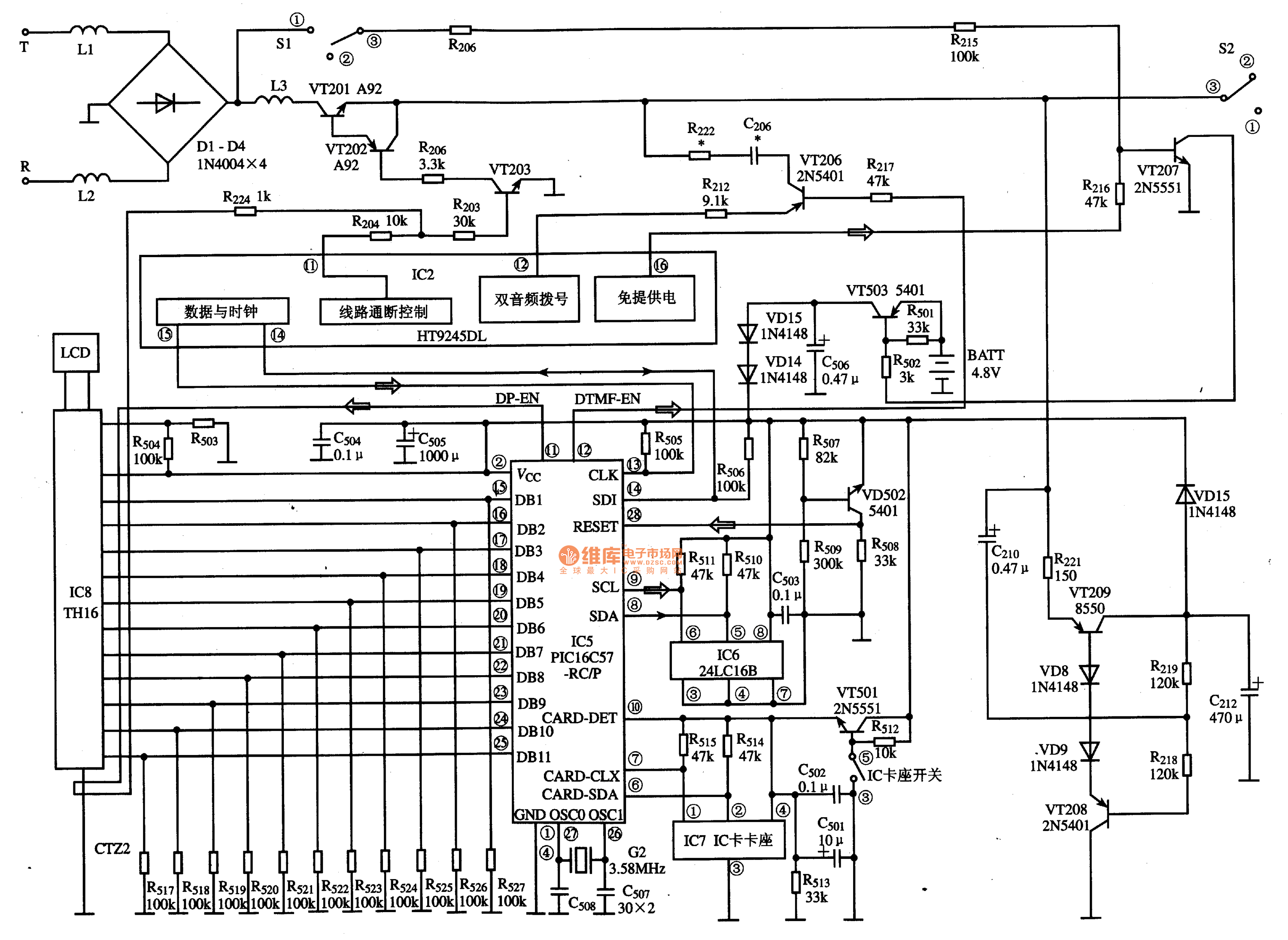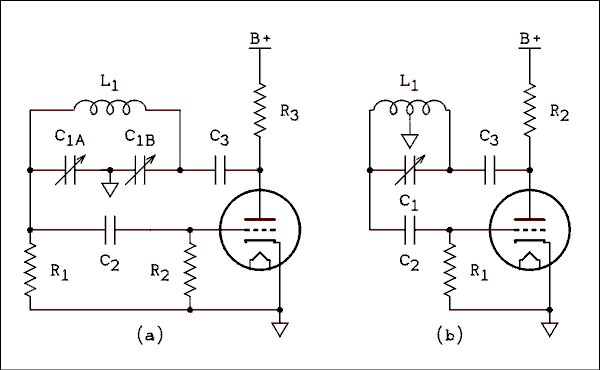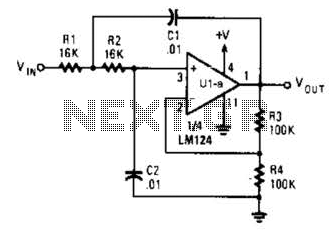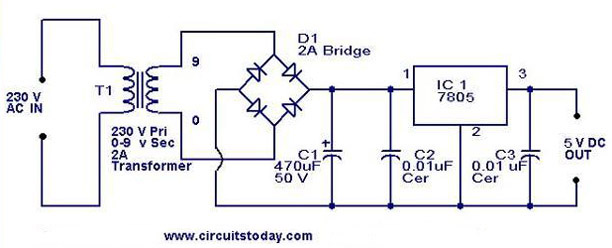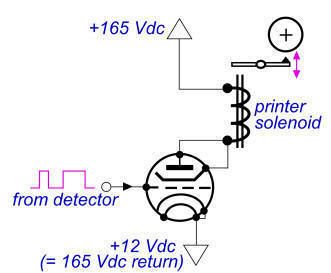
50kHz FM optical receiver circuit
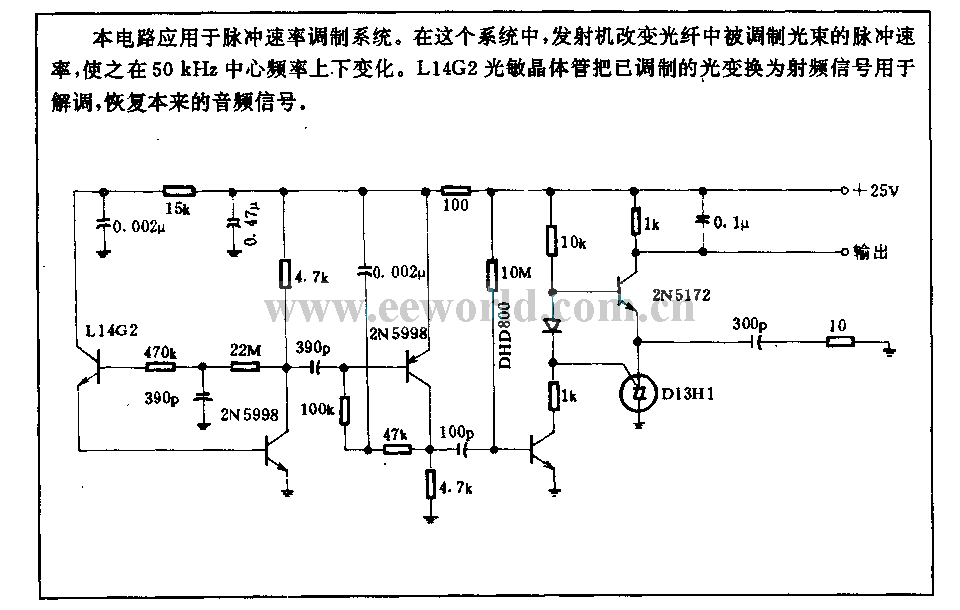
This circuit is utilized in an impulse speed modulation system. In this system, the transmitter alters the impulse speed of the modulated beam in an optical fiber, allowing it to vary around a center frequency of 50 kHz. The L14G2 optical transistor converts the modulated light into a radio-frequency signal. This radio-frequency signal is employed for demodulation, enabling the recovery of the original audio frequency signal.
The impulse speed modulation system described operates by manipulating the frequency of light pulses transmitted through an optical fiber. The transmitter is designed to modulate the light beam at a center frequency of approximately 50 kHz, which is crucial for maintaining effective communication over optical fibers. The modulation process involves varying the speed of the light pulses, which encodes the information to be transmitted.
The L14G2 optical transistor plays a pivotal role in this system by converting the modulated light signal into a radio-frequency (RF) signal. This conversion is essential for demodulation, as RF signals are easier to process and analyze than optical signals. The demodulation process involves extracting the original audio frequency signal from the RF signal, which is accomplished using appropriate demodulation techniques.
In summary, this circuit integrates optical and radio-frequency technologies to achieve effective impulse speed modulation and signal recovery, making it suitable for applications in telecommunications and data transmission systems. The combination of optical transmission and RF processing enhances the efficiency and reliability of the communication system.This circuit is used in impulse speed modulation system. In this system, transmitter change impulse speed of modulated beam in optical fiber, let it change around 50kHz center frequency. L14G2 optical transistor convert molulated light to radio-frequency signal. The radio-frequency isusedfor demodulating. It can recover original audio frequency signal.. 🔗 External reference
The impulse speed modulation system described operates by manipulating the frequency of light pulses transmitted through an optical fiber. The transmitter is designed to modulate the light beam at a center frequency of approximately 50 kHz, which is crucial for maintaining effective communication over optical fibers. The modulation process involves varying the speed of the light pulses, which encodes the information to be transmitted.
The L14G2 optical transistor plays a pivotal role in this system by converting the modulated light signal into a radio-frequency (RF) signal. This conversion is essential for demodulation, as RF signals are easier to process and analyze than optical signals. The demodulation process involves extracting the original audio frequency signal from the RF signal, which is accomplished using appropriate demodulation techniques.
In summary, this circuit integrates optical and radio-frequency technologies to achieve effective impulse speed modulation and signal recovery, making it suitable for applications in telecommunications and data transmission systems. The combination of optical transmission and RF processing enhances the efficiency and reliability of the communication system.This circuit is used in impulse speed modulation system. In this system, transmitter change impulse speed of modulated beam in optical fiber, let it change around 50kHz center frequency. L14G2 optical transistor convert molulated light to radio-frequency signal. The radio-frequency isusedfor demodulating. It can recover original audio frequency signal.. 🔗 External reference
